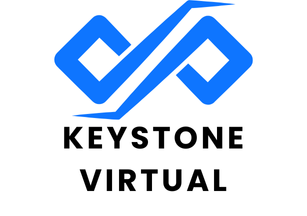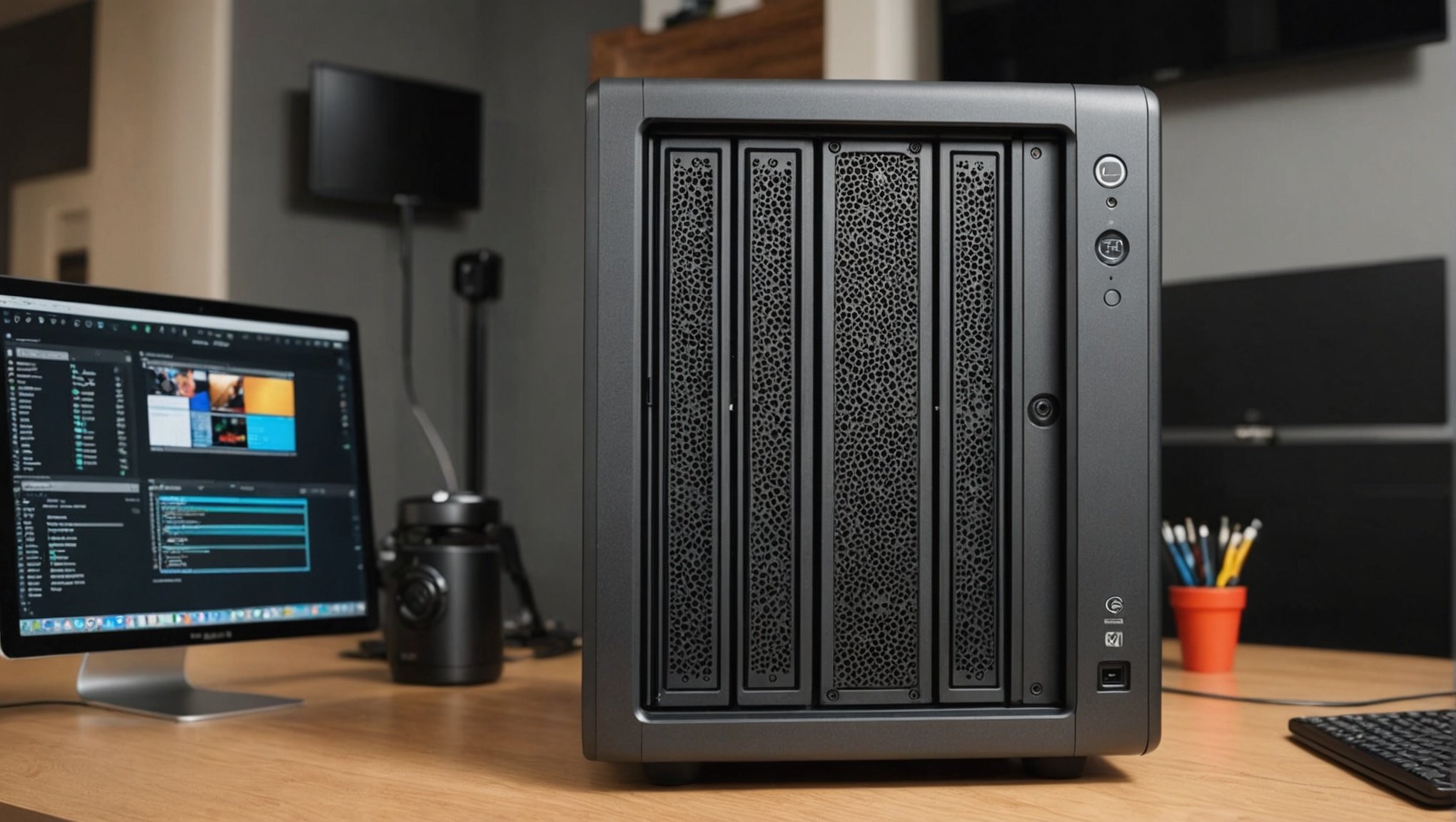Configuring a multi-bay Thunderbolt 3 RAID enclosure can significantly enhance your video editing workflow. Proper setup ensures faster data transfers, improved redundancy, and increased storage capacity. Tailoring your configuration to your specific needs prevents data loss and boosts project efficiency. This guide provides essential tips for selecting the right drives, optimizing settings, and maintaining peak performance for seamless video editing. Unlock the full potential of your editing setup with strategic insights that cater to both novice and experienced editors.
Understanding RAID for Video Editing
In the realm of video editing, choosing the right RAID configuration is crucial for balancing performance and data security. RAID, or Redundant Array of Independent Disks, offers various setups to cater to different needs.
In parallel : Mastering High-Resolution Multi-Monitor Setups for Your Trading Station with the NVIDIA Quadro P2000
RAID 0 is often preferred for its speed, as it stripes data across multiple disks, enhancing performance—a boon for video editing. However, it lacks data redundancy, meaning if one disk fails, all data is lost.
RAID 1 provides a mirror of data, offering excellent data security. It is ideal for editors prioritizing data safety over speed, as it duplicates data across drives, ensuring a backup is always available.
Additional reading : Maximize Your Dell Precision 5750: Essential Tips for 3D Rendering and CAD Performance Optimization
RAID 5 strikes a balance between speed and redundancy. It requires at least three disks and uses parity to protect data, making it a solid choice for professional video editing workflows where both performance and security are critical.
RAID 10, combining the benefits of RAID 0 and RAID 1, offers high performance and redundancy. It is suitable for demanding video editing tasks, providing both speed and data protection, albeit at a higher cost due to its need for multiple disks.
Choosing the Right Thunderbolt 3 RAID Enclosure
When selecting a Thunderbolt 3 RAID enclosure for video editing, several key features must be considered. First, ensure the enclosure supports the required RAID levels, such as RAID 0, 1, 5, or 10, to match your performance and data security needs. The compatibility of the RAID enclosure with your existing hardware and video editing software is also crucial. Thunderbolt 3 provides high-speed data transfer, essential for handling large video files efficiently.
Compatibility extends beyond just hardware connections. It's vital to ensure that the RAID enclosure works seamlessly with your video editing software. Some software may have specific requirements or optimizations for certain RAID configurations, impacting your workflow's efficiency.
Several brands are renowned for their reliable RAID enclosures. G-Technology, Promise Technology, and OWC offer models that cater to professional video editing needs. These brands provide enclosures with robust build quality and advanced features, ensuring a smooth editing experience.
In summary, choosing the right Thunderbolt 3 RAID enclosure involves evaluating compatibility with your current setup and selecting a model that meets your performance and security requirements.
Step-by-Step Configuration Process
Configuring a RAID array for video editing requires careful attention to both hardware and software elements. This step-by-step guide will help streamline the process.
Preparing the Hardware
Begin by assembling your RAID enclosure. Ensure all disks are securely installed, as a stable setup is essential for optimal performance. Verify that the enclosure is compatible with your system's Thunderbolt 3 ports, facilitating high-speed data transfer. Properly connecting the enclosure to your computer is crucial for a seamless setup.
Initial Software Setup
After hardware preparation, focus on the software. Install any necessary drivers provided by the RAID enclosure manufacturer. These drivers ensure your system recognises the enclosure and its capabilities. Next, install RAID management software to facilitate the configuration process. This software is pivotal in managing and monitoring the RAID array.
Configuring RAID Settings
Open the RAID management software to begin setting up your RAID array. Select the desired RAID level, considering your performance and data security needs. Follow the software's prompts to configure the array, ensuring each disk is correctly assigned. Once configured, initialise the array to begin using it for video editing tasks. This step finalises the configuration process, making your RAID setup ready for use.
Best Practices for RAID Management
In the world of video editing, effective RAID management is crucial for maintaining data integrity and optimizing system performance. Regular maintenance and monitoring are key to ensuring your RAID array functions smoothly. This involves routinely checking the health of each disk within the array. Many RAID management tools offer automated alerts for potential issues, allowing you to address problems before they escalate.
Beyond the RAID system itself, it's wise to implement strategies for backing up data. While RAID provides a level of redundancy, it should not replace comprehensive backup solutions. Consider using cloud storage or external drives to safeguard your projects against unforeseen failures.
When it comes to enhancing performance during video editing, there are several tips to consider. First, ensure your RAID array is configured to match your specific editing needs, balancing speed and security. Additionally, regularly defragmenting your disks can help maintain optimal read/write speeds. Finally, close unnecessary applications while editing to allocate maximum resources to your RAID system.
By adhering to these best practices for RAID management, you can ensure both the longevity of your system and the security of your valuable video projects.
Troubleshooting Common RAID Issues
In the realm of video editing, encountering RAID problems can disrupt productivity. Identifying these issues early is crucial for maintaining workflow efficiency. Common RAID problems include disk failures, degraded arrays, and performance bottlenecks.
Identifying Common RAID Array Problems
RAID arrays can experience several issues, such as disk failures or array degradation. Disk failure is often indicated by unusual noises or error messages. Degraded arrays may result in slower data access speeds, affecting video editing tasks.
Step-by-Step Solutions for Resolving Array Failures
To troubleshoot RAID failures, follow these steps:
- Check Connections: Ensure all cables and connections are secure.
- Verify Disk Health: Use RAID management software to assess the health of each disk.
- Replace Faulty Disks: If a disk is failing, replace it promptly to restore array integrity.
- Rebuild the Array: After replacing a disk, initiate the array rebuilding process via the RAID software.
Importance of Keeping Firmware and Software Up to Date
Keeping your RAID firmware and software updated is vital. Updates often include bug fixes and performance improvements, reducing the risk of RAID problems. Regularly check for updates from your RAID enclosure manufacturer to ensure optimal performance and reliability.
Performance Optimization Techniques
Optimizing performance in video editing is crucial for minimizing latency and maximizing throughput. One effective technique is performance tuning, which involves adjusting system settings to enhance the efficiency of your RAID setup. By prioritizing data transfer rates, you can significantly reduce lag during editing tasks.
Configuring System Settings for Optimal RAID Performance
To achieve optimal RAID performance, configure your system settings to support high-speed data transfer. This includes enabling features like write-back caching, which allows data to be temporarily stored, thus speeding up read and write operations. Adjusting the block size in your RAID configuration can also enhance performance, as larger blocks may improve data handling for large video files.
Utilizing Caching and Other Features for Video Editing Workflows
Incorporating caching mechanisms can further bolster your video editing workflows. Caching reduces the need to repeatedly access slower storage media, thereby accelerating data retrieval. Additionally, ensure your RAID system is equipped with sufficient RAM to handle intensive editing tasks efficiently. By leveraging these techniques, you can ensure a smoother editing experience, maintaining both speed and data integrity.
Recommended Products and Comparisons
When it comes to product recommendations for Thunderbolt 3 RAID enclosures, several models stand out for video editing. These enclosures are evaluated based on performance, cost, and user feedback, ensuring a comprehensive comparison.
Comparison of Top Thunderbolt 3 RAID Enclosures
G-Technology G-RAID is renowned for its robust performance, offering high-speed data transfer and reliability. It's ideal for professionals needing fast access to large video files. However, its premium price may be a drawback for budget-conscious users.
Promise Pegasus3 R4 is another top contender, praised for its balance of speed and cost. It provides excellent performance with a more accessible price point, making it a favourite among various video editors.
OWC ThunderBay 4 offers versatility with multiple RAID configurations, catering to diverse editing needs. Its modular design allows easy upgrades, but some users note it can be noisier than other models.
Pros and Cons Based on Performance and Cost
- G-Technology G-RAID: High performance, premium cost.
- Promise Pegasus3 R4: Balanced speed and cost.
- OWC ThunderBay 4: Versatile, but potentially noisy.
User reviews highlight the importance of choosing a RAID enclosure that aligns with specific editing requirements, considering both performance and budget constraints.











